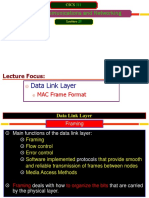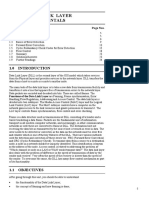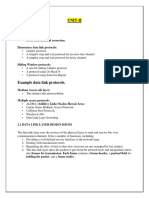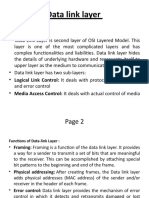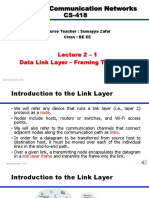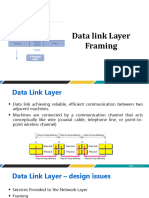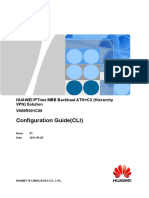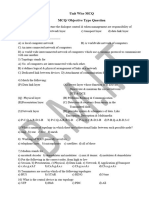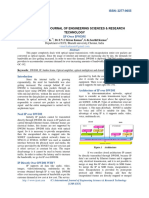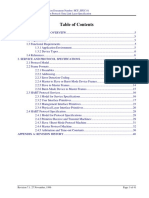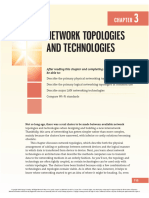0% found this document useful (0 votes)
5 views7 pagesFraming in Data Link Layer
Framing in the Data Link Layer involves organizing data into frames for efficient transmission between devices, ensuring accurate delivery and error detection. Challenges include detecting frame boundaries, handling errors, and maintaining synchronization, while methods like fixed-size and variable-size framing are employed to manage data. Techniques such as bit stuffing and error detection mechanisms are utilized to address issues related to framing efficiency and integrity.
Uploaded by
itsayushyaarCopyright
© © All Rights Reserved
We take content rights seriously. If you suspect this is your content, claim it here.
Available Formats
Download as PDF, TXT or read online on Scribd
0% found this document useful (0 votes)
5 views7 pagesFraming in Data Link Layer
Framing in the Data Link Layer involves organizing data into frames for efficient transmission between devices, ensuring accurate delivery and error detection. Challenges include detecting frame boundaries, handling errors, and maintaining synchronization, while methods like fixed-size and variable-size framing are employed to manage data. Techniques such as bit stuffing and error detection mechanisms are utilized to address issues related to framing efficiency and integrity.
Uploaded by
itsayushyaarCopyright
© © All Rights Reserved
We take content rights seriously. If you suspect this is your content, claim it here.
Available Formats
Download as PDF, TXT or read online on Scribd
/ 7












